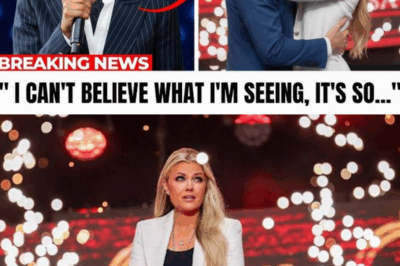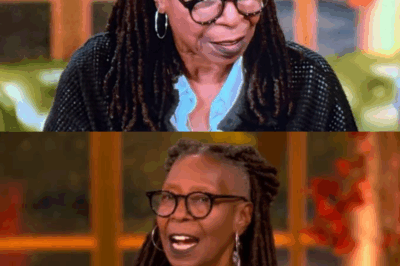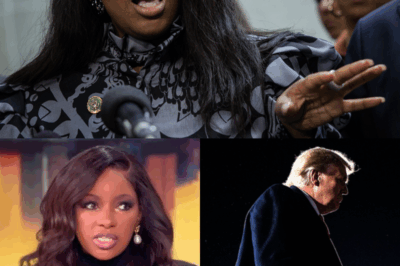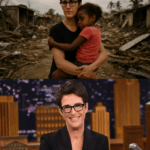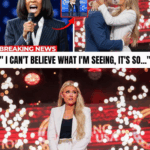Disney is facing a public relations and financial nightmare as its late-night flagship, Jimmy Kimmel Live, has seen an unprecedented 85% drop in ratings just one week into the host’s much-hyped return.
Once a staple of late-night television, Jimmy Kimmel’s show is now being described as “dead on arrival,” leaving Disney and ABC scrambling to figure out how to salvage a program that appears to be hemorrhaging viewers at an alarming rate.
The decline is shocking even by late-night television standards, where ratings have been steadily eroding across the board for years.
When Kimmel returned to the airwaves on September 23, 2025, after a temporary suspension, the debut episode drew a respectable 1.9 million viewers.
However, just one week later, that number plummeted to a mere 265,000 viewers in the key 25-54 demographic, a crucial age range for advertisers.
The sharp decline represents an 85% drop in the demo, a figure that has left both industry insiders and Disney executives stunned.
For context, the 25-54 age group is the lifeblood of television advertising.
Networks rely on these numbers to attract sponsors willing to pay premium rates for commercial spots.
A collapse of this magnitude in such a short span of time is not only embarrassing but also financially devastating.
Advertisers are unlikely to stick around when a show cannot deliver the audience they’ve been promised, and Disney is now left with a costly program that is rapidly losing relevance.

What Went Wrong for Jimmy Kimmel?
Jimmy Kimmel has long been a polarizing figure in the late-night landscape.
While his sharp political commentary and relentless jabs at conservatives have earned him a loyal following among left-leaning viewers, it has also alienated a significant portion of the American audience.
Unlike his competitors, such as Stephen Colbert and Jimmy Fallon, who have managed to maintain some semblance of balance in their humor, Kimmel has leaned heavily into divisive political rhetoric, making his show a lightning rod for controversy.
This approach may have worked during the Trump era, when political satire was in high demand, but the landscape has shifted dramatically.
Viewers appear to have grown tired of the relentless negativity and partisan attacks, especially as the country faces mounting economic and social challenges.
Instead of providing an escape or a unifying sense of humor, Kimmel’s show has become a platform for vitriol, leaving many to tune out entirely.
Adding to the problem is Kimmel’s apparent inability to adapt.
His recent return to the airwaves was marked by a tone-deaf monologue in which he boasted about being “more popular than the president of the United States,” citing a poll that claimed he was leading Donald Trump by 16 points in favorability.
The comment, intended as a jab at the former president, fell flat with viewers and highlighted just how out of touch Kimmel has become.
The Numbers Don’t Lie
The ratings tell a grim story. On the night of his return, Kimmel managed to draw 1.9 million viewers, a number that was already modest compared to his late-night competitors.
By October 2, just one week later, that number had dropped to 265,000 viewers in the key demo, a catastrophic decline that suggests even his core audience is abandoning ship.
For comparison, Fox News’ Gutfeld!, a conservative late-night show hosted by Greg Gutfeld, continues to dominate the ratings.
On the same night that Kimmel’s ratings cratered, Gutfeld! drew 2.8 million viewers, including 370,000 in the 25-54 demo.
This marks a 49% lead over Kimmel, despite airing on a cable network rather than a major broadcast channel like ABC.
The disparity between the two shows is glaring and speaks to a broader shift in the late-night landscape.
While Kimmel continues to alienate viewers with divisive rhetoric, Gutfeld has managed to carve out a niche by offering a mix of humor and commentary that resonates with a broader audience.
Disney’s Dilemma
The situation is particularly dire for Disney, which owns ABC and is responsible for Jimmy Kimmel Live.
Unlike cable networks, which often cater to niche audiences, broadcast networks like ABC are expected to appeal to a broad cross-section of viewers.
Kimmel’s plummeting ratings not only hurt Disney’s bottom line but also tarnish the network’s reputation.
Making matters worse, Disney appears to be stuck with Kimmel. According to industry insiders, the company faced significant pressure from Hollywood elites to keep the host on the air, despite his declining popularity.
Any attempt to cancel or replace him would likely spark backlash from the entertainment industry, leaving Disney in a precarious position.
“Disney is in a no-win situation,” said one media analyst.
“They can’t cancel Kimmel without facing a storm of criticism from Hollywood, but keeping him on the air is costing them millions in lost ad revenue and damaging their relationship with viewers.”
The timing couldn’t be worse for Disney, which is already grappling with a series of challenges.
From declining theme park attendance to the ongoing struggles of its streaming service, Disney+—not to mention the fallout from its public feud with Florida Governor Ron DeSantis—the company can ill afford another controversy.
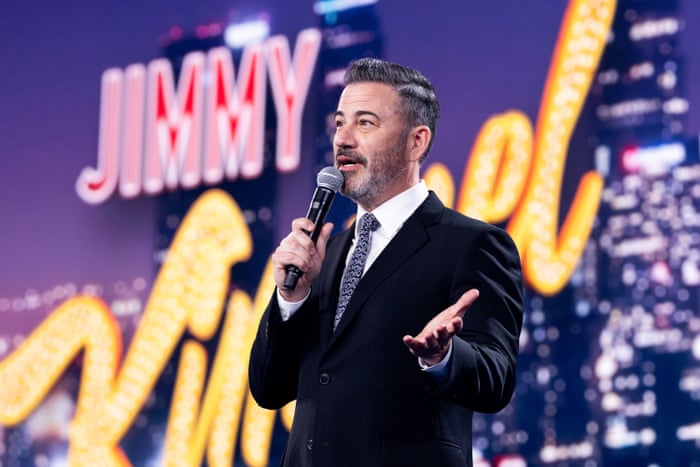
The Broader Implications
Kimmel’s ratings collapse is emblematic of a larger trend in late-night television.
Once a cornerstone of American entertainment, the genre has struggled to remain relevant in the age of streaming and social media.
Younger viewers, in particular, are increasingly turning to platforms like YouTube, TikTok, and X (formerly Twitter) for their entertainment, leaving traditional late-night shows scrambling to adapt.
However, Kimmel’s struggles go beyond the challenges facing the industry as a whole.
His show’s decline highlights the dangers of alienating large segments of the audience in an era of deep political polarization.
While it’s true that political humor has always been a staple of late-night television, the current climate demands a more nuanced approach—one that Kimmel has failed to deliver.
What’s Next for Jimmy Kimmel?
As the ratings continue to fall, the future of Jimmy Kimmel Live looks increasingly uncertain.
While Disney has yet to make any official announcements, industry insiders speculate that the network is exploring its options.
One possibility is a complete overhaul of the show, including a shift away from politics and a focus on more universal humor.
Another option is to quietly phase out the program, replacing it with a new format or host.
For now, Kimmel remains defiant, continuing to take shots at his political opponents and dismissing the criticism as partisan noise.
However, as the numbers continue to decline, it’s becoming increasingly clear that his approach is no longer resonating with viewers.
Disney, meanwhile, faces a difficult road ahead. The company must decide whether to stick with a host who has become a liability or risk the wrath of Hollywood by making a change.
Either way, the stakes are high, and the outcome could have far-reaching implications for the future of late-night television.
As one media executive put it, “This isn’t just about Jimmy Kimmel.
It’s about the survival of the entire late-night genre. If Disney can’t figure this out, it could spell the end of an era.”
News
💔 “SHE DIDN’T PLAN TO BE A HERO — SHE JUST COULDN’T WALK AWAY.” 🌧️ When Rachel Maddow landed in Jamaica to cover the aftermath of Hurricane Melissa, she expected devastation. What she didn’t expect… was her. A little girl, barefoot in the wreckage, clutching a soaked teddy bear and whispering one word: “Mama.” Reporters looked away. Cameras kept rolling. But Maddow — silent, trembling — stepped forward. That night, she stayed. Days later, she signed the papers that changed both their lives forever. Now, as the world reacts to her unexpected act of love, one haunting question remains: Was this journalism… or destiny?|KF
1. The Storm That Took Everything The storm had no mercy. Hurricane Melissa tore through Jamaica with winds that howled…
😱 “NO CAMERAS. NO PRESS. JUST ACTION.” 💥 When Hurricane Melissa left Jamaica in ruins, everyone expected statements — not silence. But that night, Rep. Jasmine Crockett made a call no one knew about. Hours later, a private shipment — blankets, medicine, and water filters worth $500,000 — quietly left U.S. soil. No press release. No credit. Just a note inside the first box that made rescuers burst into tears. Now, the world wants to know: what did she write?|KF
When Hurricane Melissa finally loosened its grip on Jamaica, what remained was not silence but the faint hum of survival…
💥 “THE TAPES WERE NEVER MEANT TO LEAVE THE BUILDING.” 😳 A Turning Point USA insider has come forward — and what they just leaked about Erika Kirk and the Chief of Staff is sending shockwaves through conservative media. Behind closed doors, secret recordings. Late-night meetings. Deleted emails that someone thought were gone forever. And now, the story is unraveling — faster than anyone can contain it. The insider’s confession doesn’t just expose one scandal… it hints at a network of cover-ups stretching far beyond TPUSA. 👀 Either way, the receipts are coming — and they could change everything. 👉 Full leaked details in the comments (CMT) before they disappear… 🔥👇👇|KF
Late last night, an anonymous insider from Turning Point USA (TPUSA) dropped a bombshell that has sent shockwaves through conservative…
“LIVE MELTDOWN ON NATIONAL TV” — WHOOPI GOLDBERG’S EXPLOSIVE MOMENT LEAVES ‘THE VIEW’ IN CHAOS 😱💥 It started like any other morning at The View. Laughter. Headlines. Controlled chaos. Then — a single note changed everything. As producers slipped Whoopi Goldberg a message mid-segment, cameras caught something no one was supposed to see. With a glare sharper than a knife, she snatched the paper, ripped it to pieces, and tossed it aside — live, unedited, and on national television. The studio froze. Her co-hosts went silent. Viewers at home could feel it — that thick, electric tension pulsing through the screen|KF
Inside Whoopi Goldberg’s Live Meltdown — and the Crisis Shaking Disney’s Daytime Empire It started with a folded piece of…
💥 “NO CAMERAS. NO PRESS. JUST THREE NAMES THE WORLD THOUGHT THEY KNEW.” 🌪️ When the Category-5 monster Hurricane Melissa tore through Jamaica, help was nowhere in sight. Then — without a single announcement — a private jet touched down at dawn. Inside: Rachel Maddow. Stephen Colbert. Joy Reid. No sponsors. No cameras. No entourage. They brought 5 tons of food, medicine, water filters, and $1.5 million in aid, all paid from their own pockets. Locals said they worked through the night — lifting boxes, feeding children, treating wounds — not a single word about fame or press. And when a volunteer asked why they came, Joy Reid quietly answered: “Because the news doesn’t need to cover this — humanity does.” By morning, they were gone. No selfies. No headlines. Just whispers spreading across the island — “Were those really them?” Nobody knows who leaked the flight manifest. But one thing’s certain: this wasn’t charity. This was rebellion — against the silence of comfort. 🕯🌎 👇 Full uncovered story before it disappears…|KF
No cameras. No sponsors. Just three journalists who decided to act, not speak. When Hurricane Melissa struck Jamaica — the…
End of content
No more pages to load



